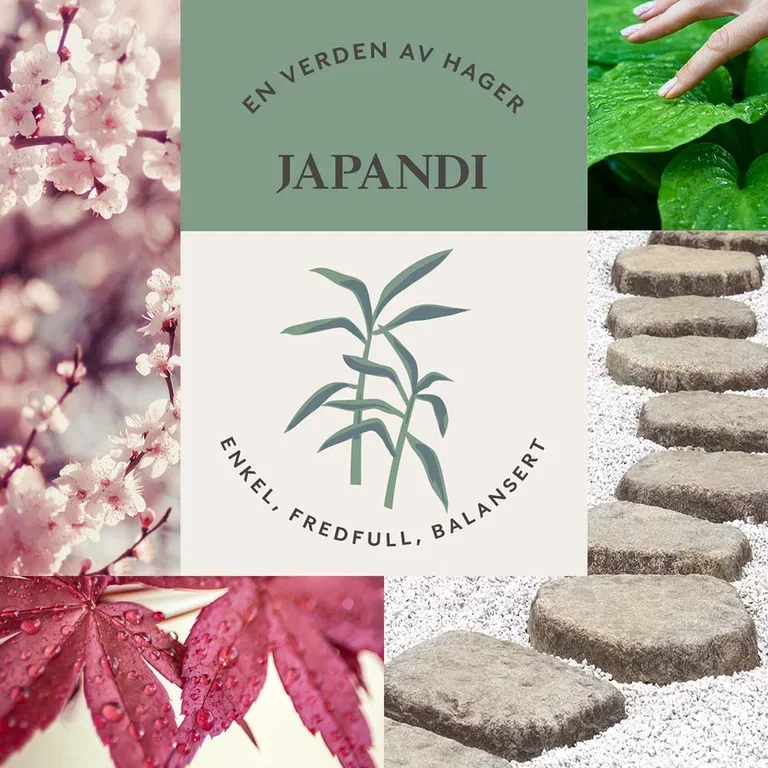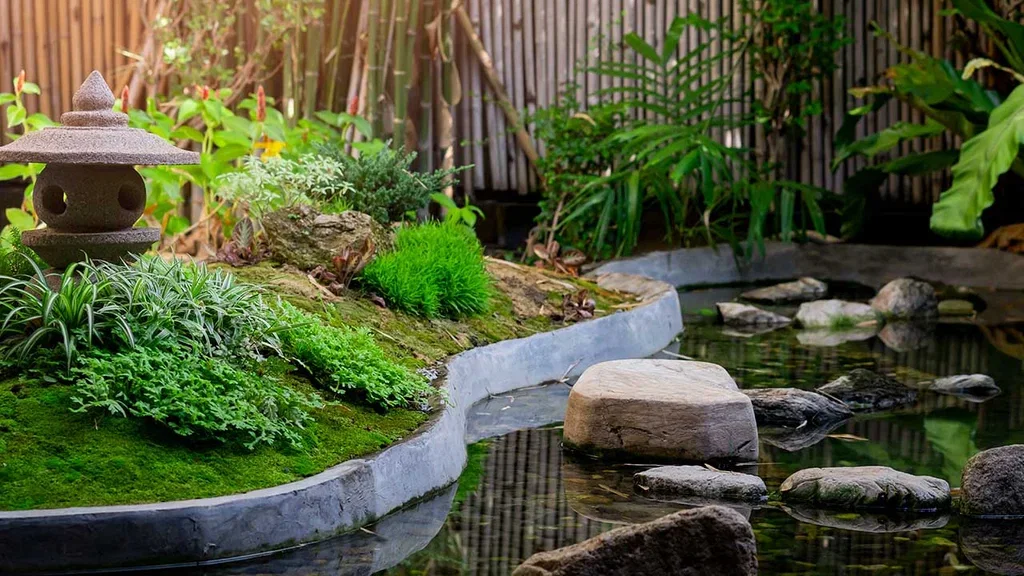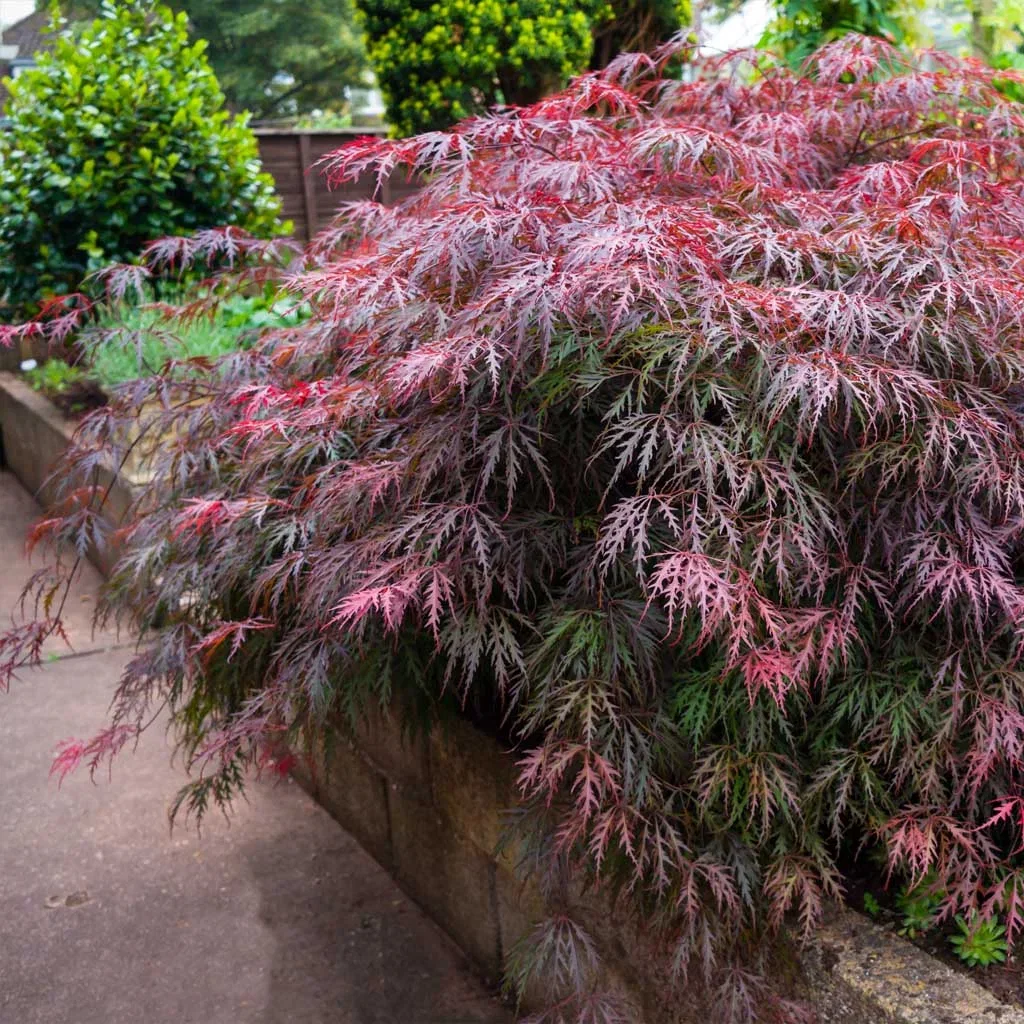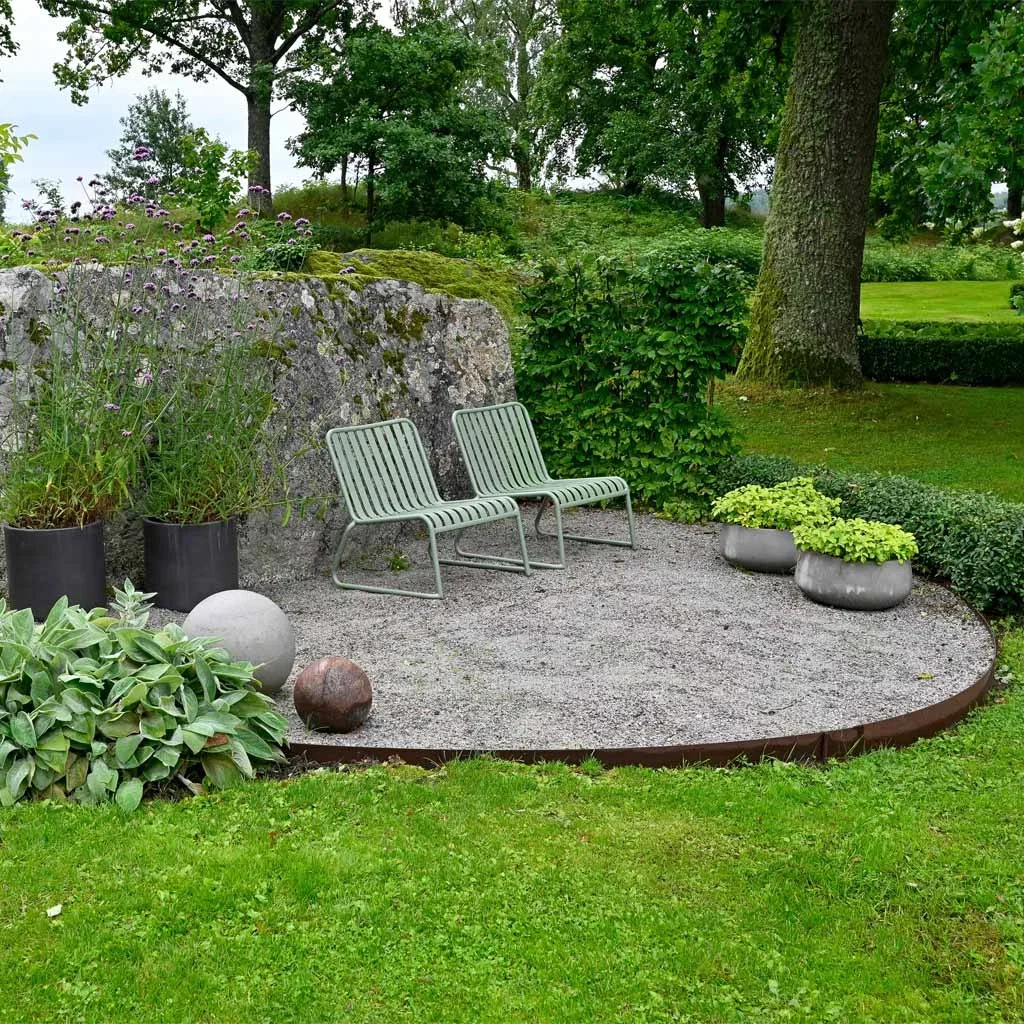JAPANDI GARDEN - simple, peaceful and balanced
Japandi is Japanese minimalism with a Nordic twist. The style combines elements from both Japanese and Scandinavian design, and is known for its minimalist aesthetic.

If you want your garden to bring you peace and harmony, the Japandi style might be just right for you. The focus here is on creating a natural and balanced environment, where every element has a purpose and contributes to a holistic, relaxing experience.
It’s worth noting that Japandi is not the same as a traditional Japanese garden or interior style. Instead, it blends in a Scandinavian design philosophy, allowing these two cultures to meet. Japanese gardens are usually strictly symmetrical and orderly. The Japandi style allows more freedom and is more informal, reflecting the Scandinavian approach to design.
How to create a Japandi-style garden
When planning to design a garden area or outdoor space in the Japandi style, there are a few key elements to keep in mind:
- Minimalism
The Japandi style emphasizes simplicity. Avoid unnecessary decorations and instead focus on the essentials to create a sense of clean, serene calm.
- Natural materials
Use natural materials like wood, stone, and plants. These are chosen for their natural beauty and durability.
- Neutral colors
The color palette is typically limited to neutral and earthy tones, helping to foster a harmonious and relaxing atmosphere.
- Plant selection
Plants in a Japandi garden are usually low-growing and low-maintenance. Consider using moss, grasses, and small shrubs in your plan.
- Water elements
Small garden ponds, streams, or fountains are common. Water has a calming effect and helps enhance the tranquil, meditative mood.
- Functional spaces
Japandi gardens blend aesthetics with functionality. Outdoor seating areas and garden paths are seamlessly integrated to create useful and inviting outdoor living spaces.

Popular plants in the Japandi garden
To create a Japandi-style garden, choose low-maintenance plants with tones that complement the neutral and earthy color palette of the Japandi aesthetic, avoiding excessive blooming or overly complex shapes.
Combine the aesthetics of both Japanese and Scandinavian design, and select plants that look as if they could grow naturally in the space.
See our selection of beautiful Japanese trees.
- Moss
Adds a sense of natural calm and continuity.
- Bamboo
Adds height and movement while maintaining a minimalist style.
- Japanese maple
Known for its beautiful autumn colors and elegant form.
- Ornamental grasses
Adds life while maintaining harmony.
- Rhododendron
Adds color and structure without being overpowering.
- Azalea
Blooms beautifully and brings color.
- Stonecrop (Sedum)
Hardy and low maintenance.
- Hosta
Ideal for shady areas, with interesting leaf colors.
- Chives
Adds fine texture and is also edible.
- Clematis
Creates vertical interest.
- Japanese pine
Provides structure and is evergreen.
- Lavender
Adds fragrance and a calming atmosphere.
- Corkscrew hazel
Has interesting, twisted branches.
- Willow pear
Features beautiful silver foliage and a distinctive form.
- Bergenia
Strong, evergreen leaves and early spring blooms.
- Hydrangea
Lush and colorful, with bushy blooms perfect for summer gardens.
- Eucalyptus
Aromatic and tall-growing, with gray-green foliage.
- Yew
Dense growth with beautifully dark green, soft needles.
The plants above can be combined in various ways to create a garden that is both visually appealing and calming, in line with the Japandi philosophy. Be mindful of placing plants in ways that enhance harmony and balance, and choose those suited to your local climate and soil.

Colors and shapes in a Japandi garden
In a Japandi-themed garden, there are several aspects to consider to ensure the style truly creates a harmonious feel. Colors and shapes are key components. A palette of calming neutral tones—such as white, beige, gray, and black—blend together to create a minimalist and serene atmosphere. These colors are complemented by natural green shades from the plant life, which introduce life and depth without feeling overwhelming.
Many also incorporate wood elements, such as bridges, stumps, and the like. The warm brown tones of the wood provide texture and warmth to the surroundings, while carefully chosen accents in deeper colors, such as navy blue or charcoal gray, offer contrast and create visual depth.
It is also beneficial to plan for a mix of clean lines and organic forms. Straight and clean lines are emphasized in architectural elements like walkways, benches, and fences, while naturally rounded stones and shaped shrubs soften the space and add an organic touch.
Symmetry and balance are reflected in every element, from the geometric patterns in tiles to the overall design of planting and paths.
The Japandi style strives for harmony and balance, where tradition meets simplicity, and the beauty of nature is highlighted in a stripped-back, functional way.

You are here:
- Garden inspiration - A world of gardens - Japandi garden









